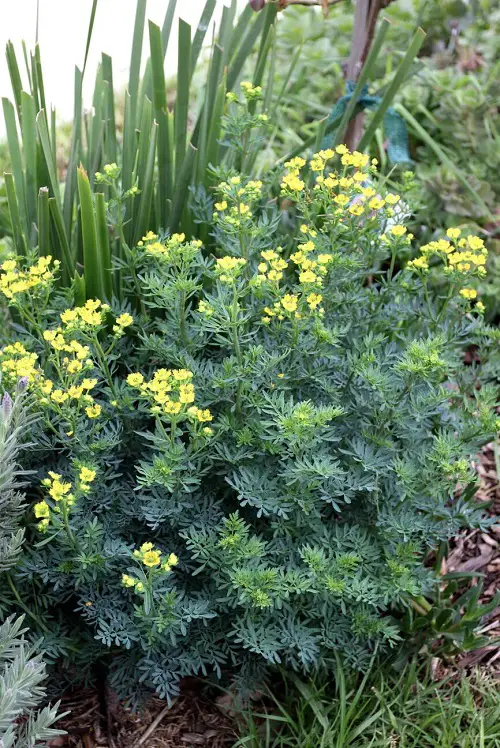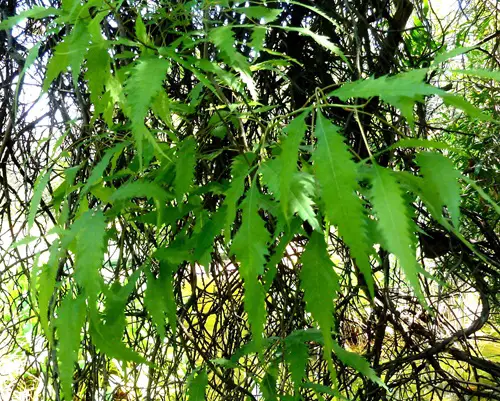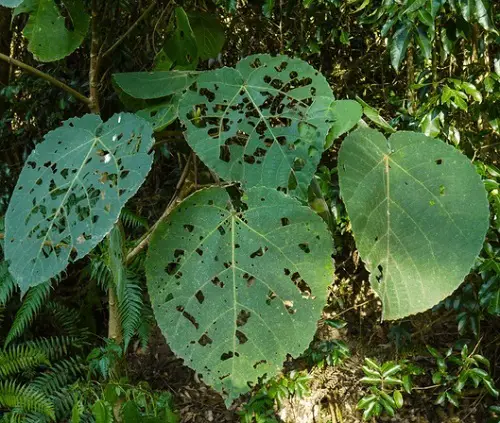Not all predators have teeth, claws, and fangs; some may just have leaves. Check out the Most Painful Plants to Touch in the World!
Most of us consider plants to be docile living creatures capable of no harm, but they must also protect themselves from threats while rooted in one place. This list of the most painful plants to touch will reveal their secret weapons of defense.
Some have stinging needles, while others have sap that causes burns. These botanical gangsters will force you to tread carefully or leave you agonized! Let’s take a look.
Most Painful Plants to Touch in the World
1. Poison Ivy
Botanical Name: Toxicodendron radicans
Poison ivy causes a painful skin rash–an allergic reaction to an oily raisin called urushiol. All plant parts comprise this compound that causes skin irritation, inflammation, and itchiness.
Bearing juicy scarlet berries that are also poisonous, this vine/shrub emerges with shiny green leaves in clusters of three. Hence the saying “leaves of three, let it be.” Here’s a detailed article on how to identify this itchy plant.
2. Rue
Botanical Name: Ruta graveolens
This fern-like shrub with yellow wildflowers looks harmless, and perhaps that is its biggest weapon. The innocent-looking rue contains a volatile oil that causes pain and skin irritation that worsens under the sun. But don’t worry; the effects are usually short-term and wear off eventually.
3. Stinging Nettle
Botanical Name: Urtica dioica
Stinging nettle has fine hair-like needles that can reduce the toughest warrior to tears. When disturbed, these needles inject histamine and other chemicals into the skin, causing severe discomfort and a painful burn.
However, this herb has been a medicinal staple since ancient times, used to treat arthritis, eczema, stay warm, etc. Once processed, dried, frozen, or cooked–it is safe to consume.
4. Pain Bush
Botanical Name: Smodingium argutum
Next on our list of most painful plants to touch in the world is pain bush. Also known as African poison ivy, it has a creamy white sap that can cause blisters. This South African scrambling bush/tree has glossy green leaves and small yellow flowers.
Like poison ivy, it causes acute allergic contact dermatitis that spreads through touch.
5. Poison Sumac
Botanical Name: Toxicodendron vernix
Another poison ivy cousin, poison sumac, uses the same compound—urushiol—to cause irritation and rashes, but with greater intensity! Hence, it is infamously touted as the “most toxic plant” in the US.
Growing as a woody shrub or small tree, it has pointed, smooth leaves and white berries. All plant parts are poisonous.
6. Finger-rot

Botanical Name: Cnidoscolus stimulosus
Finger-rot is known by different names, such as tread-softly and nose-burn. Yet, its gentle appearance belies these cautionary names. With delicate, star-shaped white flowers, deeply serrated leaves, and a slender stem, this perennial herb is covered in fine hairs that cause skin irritation and a stinging sensation.
But, the pain subsides rather quickly, lasting barely an hour after initial contact.
7. Manchineel

Botanical Name: Hippomane mancinella
This beautiful tree with apple-like fruits is toxic from top to bottom. The leaves and bark contain the chemical irritant phorbol, which causes blisters even if they fall on the skin via raindrops.
Its Spanish name translates to “little apple of death,” as its fruit can not only leave you speechless; it may eventually lead to death. And its sap was used by Native Americans to poison arrow tips. Due to all these reasons, we added it to our list of the most deadly plants!
8. Giant Hogweed
Botanical Name: Heracleum mantegazzianum
Giant hogweed is commonly spotted across Europe and parts of the US. But did you know this carrot-like plant with lobed leaves and white umbrella-shaped flower clusters can cause phytophotodermatitis? If the plant touches your skin, it makes you more sensitive to UV light and can lead to sunlight-induced allergies.
The even more terrifying part is that this plant is highly weedy and can quickly colonize your garden, disrupting useful vegetation and increasing your chances of contact with it. Check out this article for common toxic flowers like the giant hogweed to learn about its peers.
9. Giant Stinging Tree
Botanical Name: Dendrocnide excels
The Australian Giant Stinging Tree, infamous as the Devil’s Toilet Paper, is the second most painful tree on the continent and can grow up to 100 feet tall. With stinging hairs all over the visible parts, contact with its leaves or stems can cause severe pain.
The poison fires pain receptors in the nervous system, and major stings can last months! Here’s a list of plants with stinging hairs if you wish to discover more.
10. Gympie Gympie
Botanical Name: Dendrocnide moroides
This nettle family member is Australia’s most feared plant if not the world. It produces small, purple fruits and heart-shaped leaves covered in fine, silica-tipped hairs that release toxins that sting painfully and last for months.
In an interview, botanist Marina Hurley said it’s like being burned and electrocuted at the same time! It’s also called the suicide plant because the pain is so immense that many choose to end their lives to escape it.



